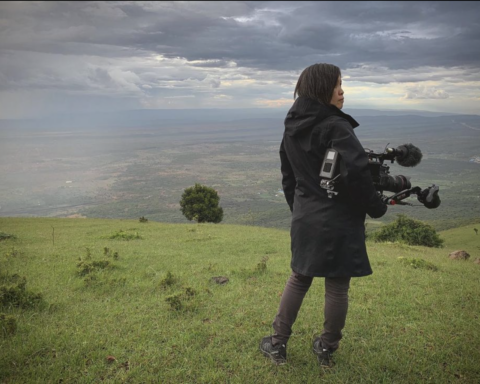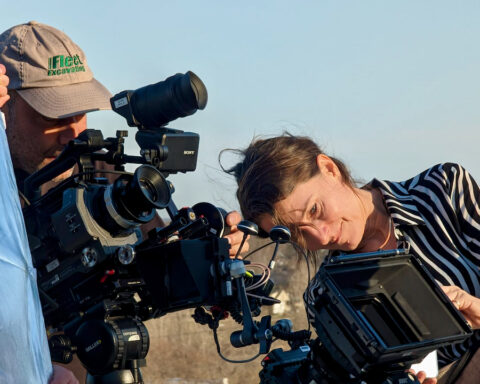On July 27, Richard Stringer passed away peacefully in Victoria, B.C. A long-time contributor to POV, Richard was a fine writer who could explain technical advances in film with clarity and precision. Richard was a long-time Vice President of the Canadian Society of Cinematographers (CSC) and compiled a lengthy set of credits in documen- taries, films, TV, commercials and videos over a 35-year career. He won a Gemini in 2000 and two CSC awards in 2000 and 2003 in a remarkable career that saw him shoot film in areas as diverse as Russia, Bolivia and the North Pole. From 1957, when as a 13-year-old he received his first camera as a Christmas present, to this spring, Richard was rarely away from the visual tool that he loved. Now he is gone, leaving behind his wife Carol, son Matt and a host of grieving friends and colleagues across Canada. For those who wish to contact Richard’s family,or to learn where to make a charitable donation, please email gjones@prismalight.com.
—Marc Glassman
For those of you who are still confused by HD (High Definition), here’s an overview.
Film was our first moving picture format. The 35mm image was about the size of a postage stamp, but when projected on a theatre screen the picture was accepted as real life. 16mm was introduced for amateurs and, with an image 1⁄4 the size of 35mm, it would only work on a smaller screen. Later, film’s almost square format changed to widescreen to fit our frame of vision. The wider format of Super 16mm became popular for blowup to 35. Later, IMAX used a picture nine times 35mm (using 70mm film) to give the biggest, clearest picture imaginable.
Video was our second moving picture format. The picture was not an image but a series of scanned lines projected in a tube in a square frame similar to the one 35mm started with. In North America we chose 525 lines; in Europe they made it 625 lines. The higher the number, the clearer the image and the bigger it could be.
Video’s recording tape was 2”, then 1”, then 3⁄4”. In 1982, Sony introduced portable cameras using 1⁄2” Betacam tape. The cameras were small enough to use off the shoulder. The picture was captured on a 2⁄3” chip that was about the size of 16mm film. But the resolution was still geared to our small TV sets.
Meanwhile, film could now do more than project an image. Film images could be transferred to videotape , or any format that came along.
A major development happened in the late 90s with Mini DV tape and the introduction of smaller cameras, which were almost immediately used by filmmakers with not much money. Also, video had decided to go widescreen even though the TVs were still square. The
resulting black bars confused the viewer. Were they getting more or less? For a while the widescreen format compromised the cameras’ resolution.
In spite of all the changes, video was still 525 (Standard Definition) or 625 (PAL). Then along came HIGH DEFINITION video. Boost the lines to 1080, make them work better (progressive), dedicate to widescreen, add better sound, and make much bigger pictures that look sharper.
The first Sony HD camera also changed the video frame rate (pictures per second) to match the film rate. The idea was to make feature movies for the big screen with HD. Well, it really hasn’t caught on yet. 35mm had more resolution and it seems to be a hard format for filmmakers to abandon. But if you want theatrical release, HD is the best video choice.
Now HD product has a rapidly growing presence in broadcast television. There is more HD programming, TVs are bigger, designed for HD. You can even project a 100” image in your home theatre.
The demand for HD product put camera manufacturers into fast forward. The first models were heavy and very expensive using HDCAM tape. Then the camcorders maintained their presence with an HDV format using Mini DV tape and a card format. Now there are many “mid sized” HD portables which use tape, discs, cards, and drives. Broadcasters are concerned that this will not stand up to the many stages in post, as well as their manipulation of information to fit the TV pipelines.
All this makes video camera choice more complex than ever. Film cameras are still a viable option for transfer to HD and film is a major player in HD program- ming. The future will include HD cameras with film camera features, chip sizes larger than 2⁄3” and resolution beyond what present HD tape can handle.











